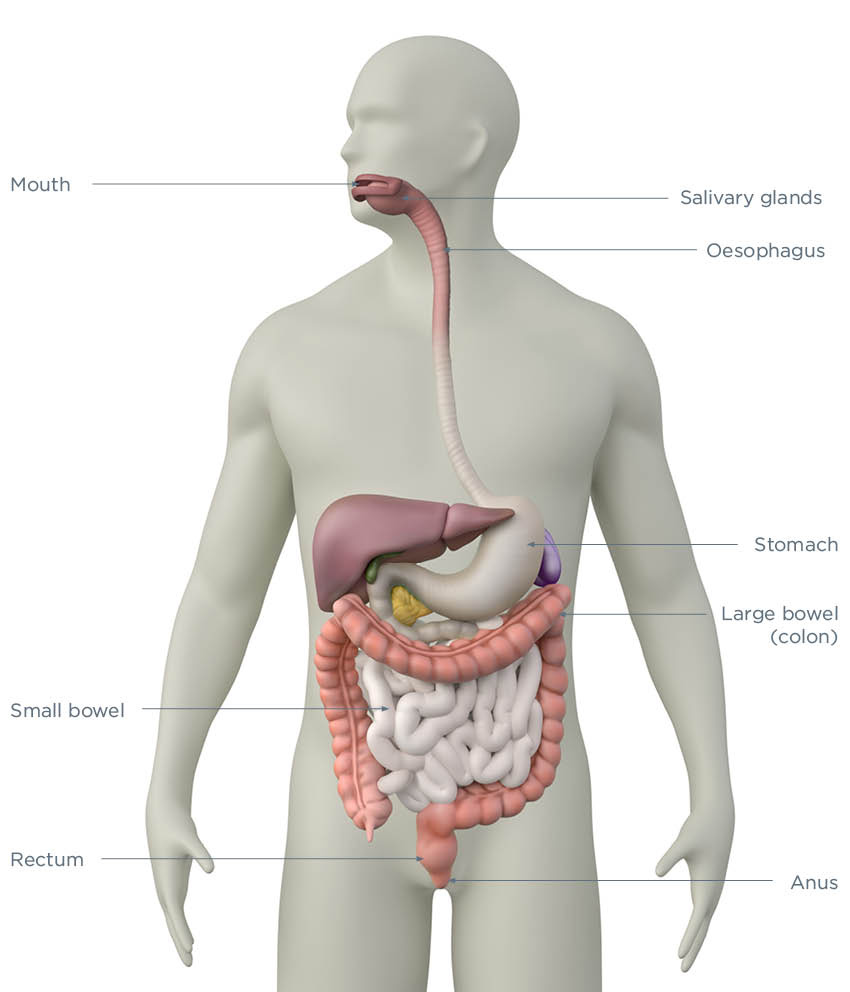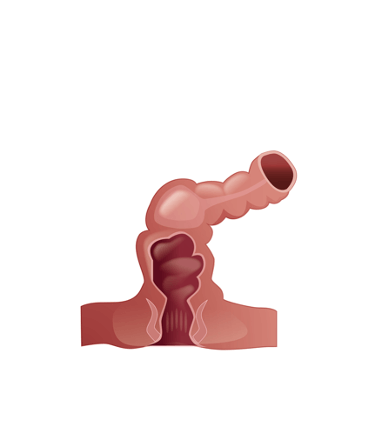How does the bowel work?
Bowel function is based on a complex interplay
The bowel is part of the digestive system (gastrointestinal tract or short GI) and is designed to help the body absorb nutrients and fluids from the foods we eat and drink.
Food is moved through the various sections of the digestive tract through wave-like muscle contractions called peristalsis. It usually takes between 24 and 72 hours for food to move through the digestive system. This is referred to as “transit time”.
The small bowel
With a length of 4 to 7 meters, the small bowel (small intestine) is the longest part of the digestive tract. The main functions of the small bowel are to complete digestion of food and to absorb nutrients. The average length of stay in the small intestine is 7 to 9 hours.1
The large bowel
The large bowel (also known as the colon or large intestine), is connected to the small bowel and ends at the rectum. Its main function is to absorb water and relevant nutrients from faecal matter (also called faeces, stool or poo). About 90 percent of the water in the colon is re-absorbed into the blood. This means only approx. 300 milliliters of fluid is lost through faeces.

The colon is about 1,5m long and 6-8 cm wide. It is made up of the caecum, ascending, transverse, descending and sigmoid colon. Colonic peristalsis moves faeces towards the anus. It can take between 12 and 48 hours for food to make its way through the colon.
Beside the peristalsis, “mass movements” (propulsion movements) of stool take place two to three times a day. These mass movements shift the faeces in the colon toward the rectum. They will typically take place after eating.1

The rectum and anus
The rectum is the last section of the colon. It opens out via the anus. It is about 12 to 15 centimetres long and has a diameter of approx. 7-8 cm. It serves as a faeces storage and controls the defecation. The faeces can be stored here for 16 to 20 hours.
When the rectum is full, the nerves sense this fullness and inform the brain whether this is due to wind or liquid or solid stool and it is time for you to find a toilet. Once you are ready and sitting on the toilet, the brain tells the anal sphincter muscles, via the nerves, to relax. As the muscles relax, the anus opens and the rectum empties.
The sphincter muscles in the anal canal (anal sphincter) ensure continence.
There are two important muscles:
- the internal anal sphincter works involuntarily
- the external anal sphincter works voluntarily and can be contracted further by squeezing
Other muscles are also important for continence: for example, the muscles of the pelvic floor, which can be suppressed at will too.
The bowel function is based on a complex interplay of muscular and neural structures. Disorders in one of these components can cause bowel dysfunction and defecation disorders.
1.Bowel Dysfunction A Comprehensive Guide for Healthcare Professionals, Chapter 2 by Brigitte Collins and Elissa Bradshaw, Springer International Publishing Switzerland 2016.

What is normal bowel function?
Bowel function is individual, and rather than one “normal” type of bowel function that fits everyone, there is a spectrum.

Bowel irrigation
Bowel irrigation – sometimes called transanal irrigation (TAI) or rectal irrigation (RI) has been practiced for many hundreds of years.

Our story
We aspire to deliver quality solutions for all, by designing solutions that put people on the road towards living their best, most fulfilled lives.

Learning to enjoy the simple things in life again
Tony received permanent nerve damage after surgery which caused bowel incontinence, and the symptoms impacted every part of his life.
